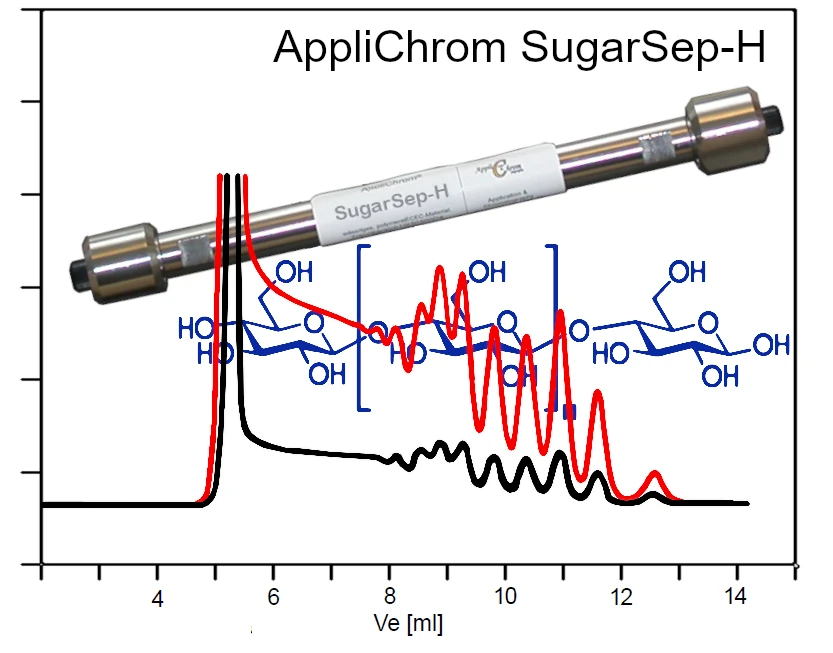
The challenge in sugar analysis arises from the many different forms in which sugars can be present. Apart from the C-number of the sugars themselves, they also exist in isomeric and even enantiomeric forms and form countless oligo- or polymers.
If knowledge of the composition of sugar mixtures and the distribution of isomers is required, highly selective and sophisticated separation methods are needed.
On the other hand, the processes should not be too complicated or time-consuming. The use of de-ionized water as a running agent is also important for reasons of cost and environmental protection.
AppliChrom has now found optimized solutions for the analysis of carbohydrates and offers a range of highly specialized separation columns. Depending on whether the analytes contain sugars, sugar-alcohols, alcohols or organic acids, three lines of columns with special separation phases are available:
AppliChrom SugarSep-H I / -H II
for the analysis of sugars, sugar alcohols, alcohols and organic acids. The H-type is used when the focus is more on the sugar-alcohols and acids and less on the sugars themselves.
AppliChrom SugarSep-Ca
for the analysis of sugars, sugar-alcohols and alcohols. This is the column most commonly used for the separation of sugars and alcohols. Less suitable for acids because a certain amount of adsorption can occur.
AppliChrom SugarSep-Oligo is a further development of the traditional AppliChrom SugarSep-Na material for the analysis of sugars, sugar alcohols and carboxylic acids, especially for oligo- and polysaccharides.
Die The advantages of the new series:
+ very low costs due to the water-based carrier liquid
+ using a water-based carrier is particularly environmentally friendly
+ very low costs for waste disposal
+ easy to handle - direct analysis from the aqueous samples
+ low investment costs - HPLC system can be used directly with an
RI detector or ELSD (evaporative light scattering detector)
The optimal column type is generally selected by considering which sugars or compounds are to be expected in the samples. The most suitable column is then determined using the freely accessible database at www.sugar-hplc.com . This database contains almost all sugars, acids and alcohols that occur frequently and that have been measured on the various columns at different temperatures, solvents, etc. This allows the expected separation to be determined. It allows the expected selectivity to be predicted and avoids wrong decisions.
